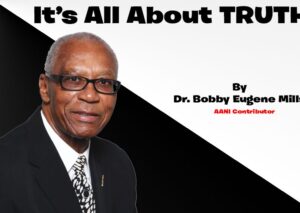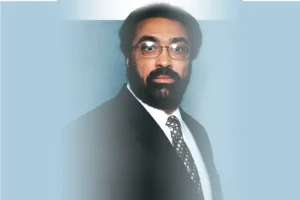By Earl Ofari Hutchinson
Let’s crunch some numbers in the 2016 presidential election. Trump and rival Hillary Clinton made a combined 250 plus official campaign vote trips to Pennsylvania, Florida, North Carolina, Ohio, Michigan and Wisconsin. This was exactly 250 plus more visits than they made to California and New York, the nation’s most populist states. Eighteen states got no visits from either of them. There was no need. Long before the first vote was cast, voters in the eighteen states and their Electoral College votes had already been earmarked for either Clinton or Trump. They were rock solid, unshakeable either GOP or Democratic majority states that were safely in the candidate’s respective bags.
The Electoral College isn’t the only reason national elections aren’t really national. And why a handful of states determine the national winner out of all proportion to their population and location.
Wisconsin and Michigan have a combined 36 electoral votes, while New York and California dwarf them with their massive number of electoral votes. Yet California and New York got a paltry two presidential visits, and both were from Clinton.
The six presidential maker states also have a fairly even sized mix of Democrat, Republican, and independents. However, that must be fine-tuned, and Trump showed how. He pitched a relatively small narrow base of voters in the suburbs and rural parts of the six states with his quasi-economic populist, full throated race and immigrant bashing, America first, demagogic campaign. This was just enough to ensure that these voters stormed the polls and gave him the razor edge he needed win several of these states. This tact would not have worked if these voters were in any of the other states that were either reliably Democrat or Republican.
Trump will do the same thing again in the 2020 presidential campaign. The difference this time is that his Democratic presidential rival will do the same and try to peel off some of the Trump base while trying to ramp up the vote among blacks, Hispanics, young persons, and suburban college educated women, to offset the Trump crowd. The problem with this is that it still gives outsize power to these six states and effectively marginalizes the other forty-four.
This has dire consequences. It makes eligible voters even less inclined to make any effort to go to the polls. The thinking being what difference does it make, the game is already rigged, and my vote doesn’t count. Appeals that there’s more at stake in a presidential election than just the presidency, but that lots of local and state offices and ballot initiatives are just as important, and votes for them count too flop when the mass media and public fixate on the race to the White House. This malaise hurts Democrats far more than Republicans because their voter base is far more diverse, eclectic, and with many younger voters, fickle.
It stokes resentment. It’s repeatedly said that it’s outrageous that six states are the shot callers in a national election. This makes a mockery of the pretense that the popular vote is what elections should be about. If a less educated white rural or blue-collar voter can get all the attention from Trump and even a Democratic presidential candidate, the message is that their vote in six states means everything, while a vote in the other forty-four states is means nothing.
The other problem is race. It’s not that the six states are the whitest states in the union. That distinction goes to states such as Vermont or Idaho. But both states are either lock down GOP or Democratic states. It’s the sometime subtle, sometimes blatant, racial pandering to certain voters in the six states that’s the problem.
The hard reality is that the GOP could not have been competitive during the 2008, 2012 and the 2016 presidential campaigns without the bail out from less educated white male voters. Much has been made since then that they are a dwindling percent of the electorate, and that Hispanics, Asian, black, young, and women voters will permanently tip the balance of political power to the Democrats in coming national elections. It’s true that blue collar white voters have shrunk from more than half of the nation’s voters to less than forty percent. The assumption based solely on this slide and the increased minority population numbers and regional demographic changes is that the GOP’s white vote strategy is doomed to fail. This ignores three major factors in voting patterns. Elections are usually won by candidates with a solid, and impassioned core of bloc voters. White males, particularly older white males, vote consistently and faithfully. And they vote in a far greater percentage than Hispanics and blacks.
This tells much why six states with larger than life numbers of these voters are the undisputed kingmakers in national politics. That won’t change in 2020.
Earl Ofari Hutchinson is an author and political analyst. He is the author of Who Can Beat Trump?: America’s Choice 2020https://www.amazon.com/dp/B07KVM86C6 He is a weekly co-host of the Al Sharpton Show on Radio One. He is the host of the weekly Hutchinson Report on KPFK 90.7 FM Los Angeles and the Pacifica Network.
Photo credit: Earl Ofari Hutchinson









